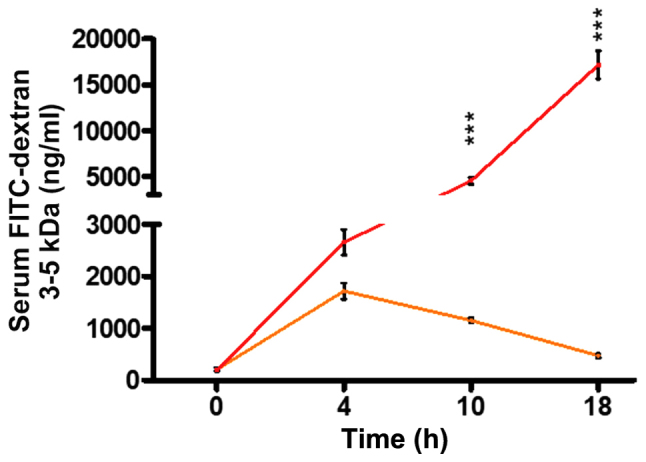Figure 1.

P. aeruginosa infection dramatically increases intestinal permeability following burn and infection. Mice were burnt (orange line) or burnt and infected with P. aeruginosa strain PA14 (red line). FITC-dextran 3–5 kDa flow from the intestinal lumen to the systemic circulation increases following burn alone, with a peak at 4 h, reaching 1,700 ng/ml and a gradual drop thereafter. FITC levels following BI show a continuous rise, reaching a concentration of over 17,000 ng/ml at 18 h following insult. The difference between the two groups becomes statistically significant at 10 h (P<0.001) and further rises at 18 h (P<0.001). Mice at 0 h demonstrate the sham FITC levels. PA14 burn-site infection was induced by intradermal administration of 105 CFUs/animal. FITC-dextran 3–5 kDa levels were assessed in the serum with fluorescent spectrophotometry (excitation, 480 nm and emission, 520 nm). Data show the average +/- SEM (n=5). Statistical significance was assessed using two-way ANOVA + Bonferroni correction. FITC-dextran, Fluorescein Isothiocyanate-Dextran. ***P<0.001.
